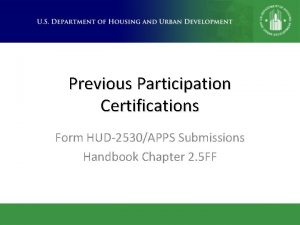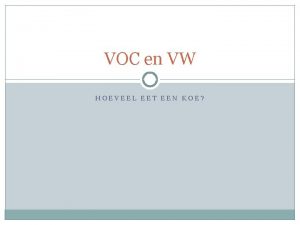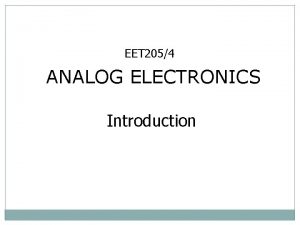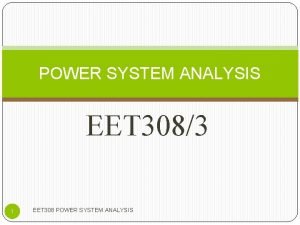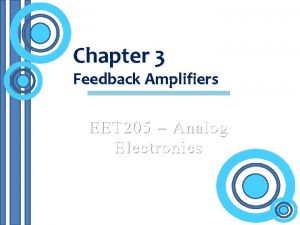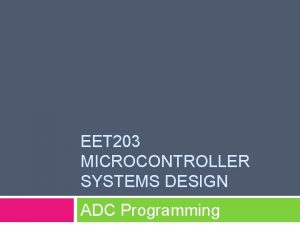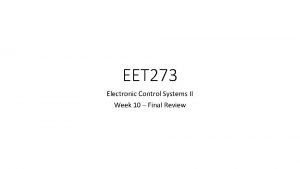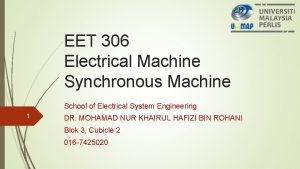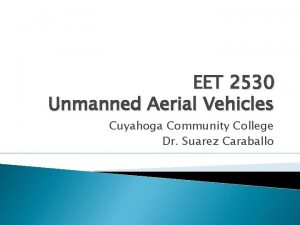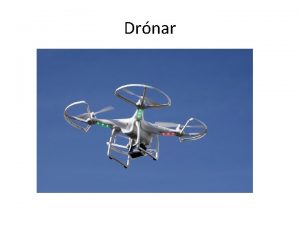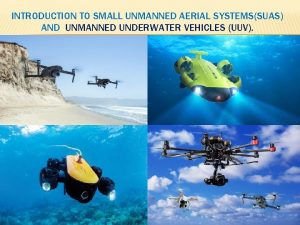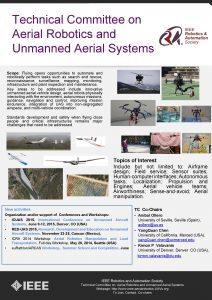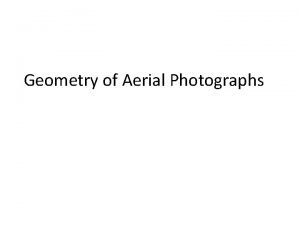EET 2530 Unmanned Aerial Vehicles UAVs Motors Propellers














- Slides: 14

EET 2530 – Unmanned Aerial Vehicles (UAVs) Motors, Propellers and Batteries YTADrones. pb. Works. com

DC Motors �Brushed vs Brushless

Brushed Motors � spin the coil (copper wire) inside a case with fixed magnets mounted around the outside of the casing.

Brushless Motor � do the opposite; the coils are fixed either to the outer casing(outrunner) or inside the casing (inrunner) while the magnets are spun. Inrunner Magnets Outrunner

Important Motor Specifications (Specs) � Used to calculate different aspects of quads

Required Thrust per Motor A rule of thumb is Required Thrust per motor = ( Weight x 2 ) / 4 Example: Drone Weight=1 KG Thrust per Motor = (Weight x 2)/4 = (1 KGx 2)/4 = 2 KG/4 = . 5 KG or 500 grams per motor Will the motor described above be able to lift this quadcopter? Why or why not?

Propellers (Props)

Prop Pitch � Higher Pitch=slower rotation and more current ◦ Fast, Quick maneuvers � Lower Pitch= more torque, greater stability ◦ Acrobatics and Videography

Motor’s Max Amp Draw � =Motor watts/battery voltage � =150 Watts/7. 4 V � Use = 20. 27 Amps this number to pick the proper Electronic Speed Controller (ESC) for your quadcopter

Lithium Polymer Batteries (Li-Po) � Each Cell has 3. 7 V ◦ 1 S=1 cell = 3. 7 V ◦ 2 S=2 cells= 7. 4 V

Li-Po Battery Capacity � Capacity= size of the “Fuel Tank” of a battery � 1000 m. Ah=1 Amp Hour ◦ Flight time in min=(Capacity/average amp draw)*60

C Rating=Maximum Safe Continuous Amp Draw C rating= how fast the battery can be discharged safely = C rating x Capacity (in Amps) Calculating the C-Rating of our example battery: (5000 m. Ah=5 A) 20 x 5 A = 100 A

� Surpassing the batteries C rating during flight will stress and ruin a battery � Battery bursting into flames is possible! � Signs of Li-Po battery having been stressed ◦ “bloating” of battery ◦ Heat ◦ Fire

Li-Po Batteries � NEVER leave a Li-Po battery charging unattended!





